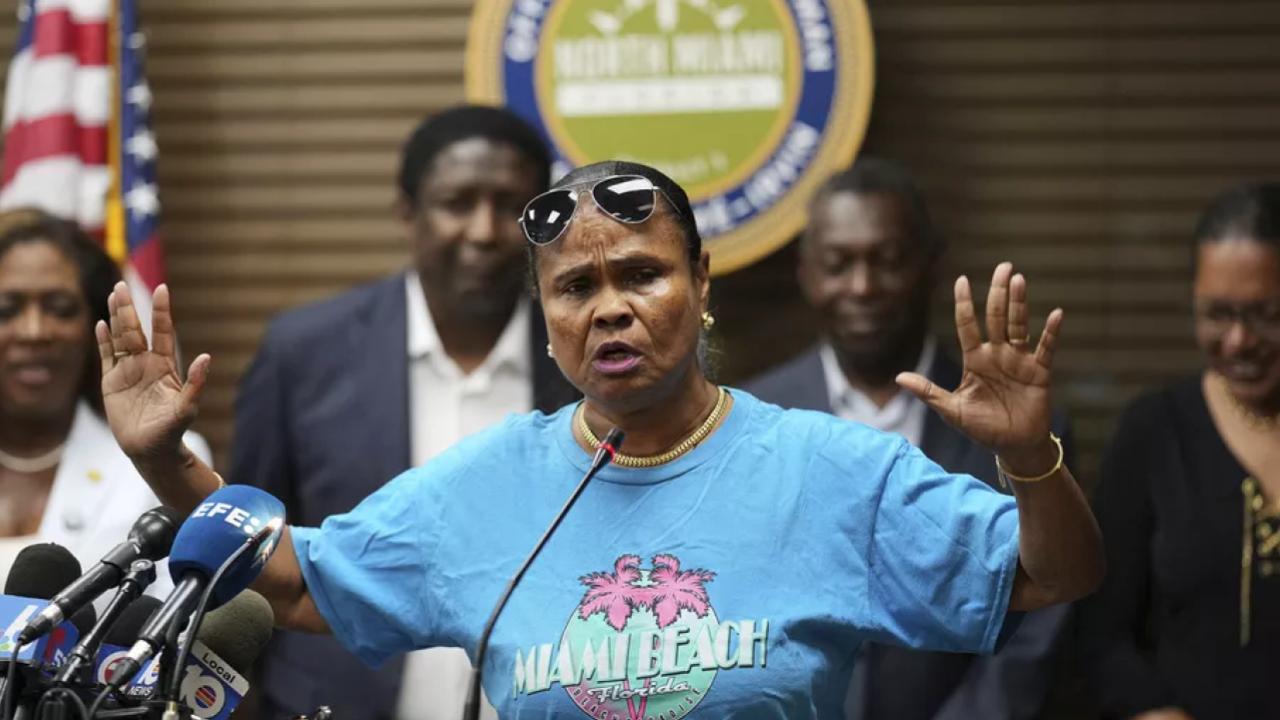When it comes to safety, especially during natural disasters, every second counts. That’s why multilingual disaster alerts play a critical role in making sure everyone — no matter what language they speak — gets the heads-up they need to protect themselves and their loved ones. But here’s the kicker: Trump’s FCC (Federal Communications Commission) has been holding back on rolling out these vital multilingual alerts. The fallout? Cities like Los Angeles, with their rich cultural and language diversity, are left vulnerable when disaster strikes.

In this article, we’ll dive deep into why these multilingual emergency alerts matter, how the FCC’s delay impacts communities, especially in L.A., and what’s being done to get things moving. I’ll break it down step-by-step so it’s easy to understand and packed with solid facts and advice — whether you’re a concerned citizen, a local leader, or a policy wonk looking for the lowdown.
Trump’s FCC Holds Back Crucial Multilingual Disaster Alerts
| Topic | Details |
|---|---|
| What are Multilingual Disaster Alerts? | Emergency messages sent in multiple languages to ensure wider comprehension and safety. |
| FCC’s Role | Responsible for implementing wireless emergency alerts (WEA), including multilingual expansion. |
| Delay Since | October 2023: FCC approved rules but has not published the order to begin rollout. |
| Affected Population | 68 million Americans speak languages other than English at home (U.S. Census). |
| Why L.A. Is Vulnerable | High diversity with many limited English proficiency (LEP) communities and frequent natural disasters (wildfires, earthquakes). |
| Local Response | Lawmakers and community groups urging FCC to act immediately to prevent loss of life. |
Multilingual disaster alerts aren’t just a nice-to-have — they’re a lifesaver. As the U.S. becomes more diverse, especially cities like Los Angeles, making sure everyone understands emergency warnings is an absolute must. The FCC’s delay under Trump’s administration has left millions at risk, particularly those with limited English proficiency.
Local leaders, lawmakers, and community advocates are sounding the alarm, pushing for urgent action. Meanwhile, residents should stay informed and support efforts demanding equitable emergency communications. Everyone deserves the chance to stay safe — no matter what language they speak at home.
What Are Multilingual Disaster Alerts and Why Do They Matter?
Think about it — if a wildfire or earthquake hits your neighborhood, and the alert is only in English, but you or your family speak Spanish, Chinese, Tagalog, Korean, or any other language at home, would you understand the urgency?
Multilingual disaster alerts are emergency messages sent through the wireless emergency alert system (WEA) that reach people in their preferred language. These alerts include important instructions like evacuation orders, shelter-in-place notices, and updates about the disaster’s progress.
Why It’s a Big Deal
- Safety first: When people understand the alert, they’re more likely to respond quickly, saving lives.
- Equity and inclusion: The U.S. is a melting pot. According to the 2020 U.S. Census, over 68 million Americans speak a language other than English at home, many of whom have limited English proficiency (LEP).
- Avoid confusion: Language barriers can lead to chaos during emergencies, as seen in past disasters where communities didn’t get timely warnings or misunderstood instructions.
The FCC’s Role and the Delay Under Trump’s Chairmanship
The Federal Communications Commission (FCC) is the government agency tasked with regulating interstate communications, including the Wireless Emergency Alert system. This system sends alerts to cell phones and other wireless devices during emergencies.
The 2023 Rule Approval
In October 2023, the FCC, under Chairman Brendan Carr (appointed by Trump), approved a rule to expand emergency alerts to include multilingual WEAs in over a dozen languages. This move was supposed to bring a much-needed upgrade to the alert system.
The Hold-Up
Despite the approval, the FCC has not yet published the official order in the Federal Register, which is a required legal step to start the implementation process. This bureaucratic hold-up means the multilingual alerts have not gone live — leaving millions in the dark during emergencies.
- Why? The delay seems to be tied to internal FCC politics and administrative roadblocks rather than technical or funding issues.
- The delay affects not only California but other states with diverse populations.
Los Angeles: A City at Risk
Los Angeles is a prime example of why multilingual alerts are urgent:
- Diverse population: Over 40% of L.A. residents speak a language other than English at home, with large communities of Spanish, Chinese, Tagalog, Korean, and Vietnamese speakers.
- Disaster-prone: The region faces frequent wildfires, earthquakes, and flash floods.
- Real-life impact: During recent wildfires like the Pacific Palisades and Eaton Canyon fires, many non-English speakers didn’t receive or understand the alerts in time, resulting in delayed evacuations and unnecessary risk.
Local leaders have raised alarms:
- Representative Nanette Diaz Barragán called the FCC’s inaction “deeply concerning” and urged immediate steps to implement multilingual alerts.
- Community groups such as the AAPI Equity Alliance called the delay a “dereliction of duty,” stressing that communication failure can lead to loss of lives.
How Multilingual Emergency Alerts Work: A Simple Breakdown
- Triggering an Alert: When a disaster happens, authorized agencies (like FEMA, local emergency services) send an alert message.
- Language Translation: The alert is translated into the selected languages based on the community demographics.
- Wireless Delivery: Messages are sent as Wireless Emergency Alerts (WEA) that pop up on mobile devices — no app download needed.
- User Reception: People receive the alert in their preferred language, allowing them to understand instructions and act promptly.
- Continuous Updates: Follow-up messages keep communities informed as situations evolve.
What’s Being Done — And What You Can Do
Government & Community Action
- Legislators pushing for accountability: Multiple bills are in Congress urging the FCC to finalize and implement multilingual alerts.
- Public pressure: Community organizations are mobilizing to demand faster action, highlighting real stories of lives impacted.
- Local preparedness: Cities like L.A. are working on complementary multilingual communication strategies, but these don’t replace the need for a federally supported alert system.
What You Can Do
- Stay informed: Sign up for local emergency alerts via city or county websites. Many have language options.
- Spread awareness: Share info about the FCC delay with your networks to increase public pressure.
- Support advocacy groups: Groups working on emergency communication equity rely on public support to push for change.
FAQs About Multilingual Disaster Alerts and FCC Delays
Q1: Why hasn’t the FCC implemented multilingual alerts yet?
A1: The FCC approved the rule in October 2023, but the required order hasn’t been published in the Federal Register, delaying implementation. This is mostly due to administrative and political reasons.
Q2: How many languages will the alerts be available in?
A2: The FCC rule plans for alerts in over a dozen languages, covering the most common non-English languages spoken across the U.S.
Q3: Can local governments send alerts in other languages right now?
A3: Some local agencies have their own multilingual systems, but they can’t replace the national Wireless Emergency Alert system, which reaches cell phones directly.
Q4: How can I ensure I receive alerts in my language?
A4: Many local governments let you sign up for customized alerts via websites or apps. Check your city’s emergency management office for details.
Q5: What can be done to speed up FCC’s implementation?
A5: Public pressure, congressional oversight, and community advocacy can push the FCC to publish the necessary order and move forward.






